Das Navigieren in der komplexen Landschaft von Textilvorschriften und Sicherheitsstandards ist entmutigend. Viele Unternehmen entdecken Konformitätsprobleme zu spät, was zu kostspieligen Produkten, Importproblemen oder sogar rechtlichen Haftungen führt, die den Ruf der Marke beschädigen.
Activewear müssen verschiedene Sicherheits- und Qualitätsstandards erfüllen, einschließlich der Oeko-Tex-Standard-100-Zertifizierung (die sicherstellen, dass Textilien frei von schädlichen Substanzen sind), Leistungsteststandards und regionspezifische Vorschriften wie EU Reichweite oder US-amerikanische CPSIA. Ethische Produktionszertifizierungen werden für bewusste Verbraucher immer wichtiger.
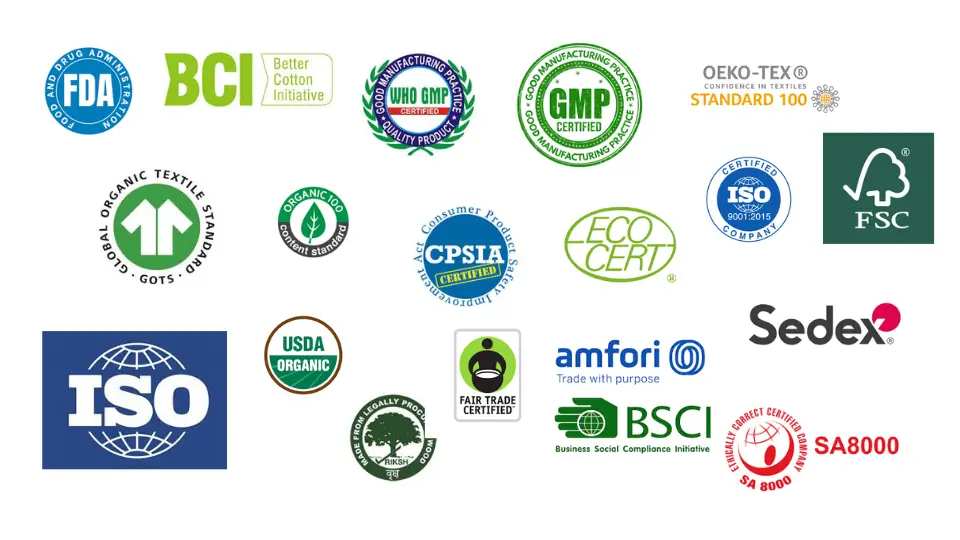
Wenn wir die Einhaltung und Sicherheit in allen unseren Activewear -Produkten priorisieren. Unsere Erfahrung in der Herstellung von über 30 Millionen US -Dollar im Jahresumsatz für mehr als 3.000 Geschäfte hat uns die entscheidende Bedeutung der Erfüllung der globalen Standards beigebracht. Lassen Sie mich teilen, was wir über die Navigation in der komplexen Welt der Einhaltung, Zertifizierungen und Fabrikstandards gelernt haben.
Welche Zertifizierungen sind für Activewear wichtig?
Zu verstehen, welche Zertifizierungen wirklich relevant sind, kann überwältigend sein. Viele Unternehmen verschwenden Ressourcen für unnötige Zertifizierungen und fehlen gleichzeitig diejenigen, die für ihre Zielmärkte von entscheidender Bedeutung sind.
Zu den wichtigsten Zertifizierungen für Activewear gehören Oeko-Tex-Standard 100 (sicherstellen, dass Textilien frei von schädlichen Substanzen sind), ISO 9001 (Qualitätsmanagementsysteme), Social Compliance-Audits wie BSCI oder Wrap (Ethical Manufacturing) und optionale Nachhaltigkeitszertifizierungen wie Bluesign® (umweltfreundliche Produktion) oder GRS (für Recycled Inhalt).
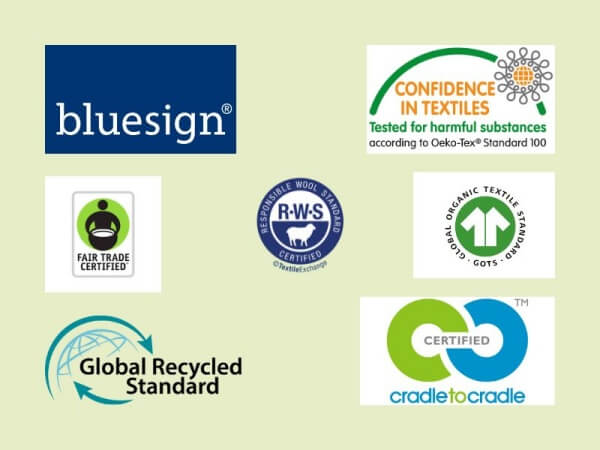
Wenn wir mehrere Zertifizierungen beibehalten, um sicherzustellen, dass unsere Activewear internationale Standards für Sicherheit, Qualität und ethische Fertigung entspricht. Folgendes müssen Sie über relevante Zertifizierungen wissen:
Wesentliche Produktsicherheitszertifizierungen
Oeko-tex Standard 100
Was es zertifiziert: Textilien auf schädliche Substanzen getestet
Bedeutung: Kritisch für Produkte mit längerem Hautkontakt
Testen des Geltungsbereichs: Tests auf regulierte und nicht regulierte Substanzen
Gültigkeit: Erfordert jährliche Erneuerung und regelmäßige Tests
Oeko-TEX Standard 100 ist aufgrund der intimen Art des Produkts und des erweiterten Kontakts mit der Haut beim Schwitzen besonders wichtig für Activewear. Die Zertifizierung stellt sicher, dass alle Komponenten - von Stoffen bis hin zu Fäden, Elastik und Drucken - strenge Sicherheitsanforderungen entsprechen.
UV -Schutzzertifizierung
Was es zertifiziert: Die Fähigkeit des Stoffes, schädliche UV -Strahlen zu blockieren
Bedeutung: Relevant für die Leistung im Freien, die Leistungsverschleiß im Freien
Testmethode: UPF -Bewertung (Ultraviolet -Schutzfaktor)
Häufiger Standard: AS/NZS 4399 oder AATCC 183
Für Outdoor Activewear bietet die UPF -Zertifizierung verifizierte Sonnenschutzansprüche, die ein wertvolles Verkaufsargument sein können.
Qualitätsmanagementzertifizierungen
ISO 9001
Was es zertifiziert: Qualitätsmanagementsysteme
Bedeutung: Demonstriert einen systematischen Ansatz zur Qualitätsqualität
Anforderungen: Dokumentierte Verfahren, interne Audits, kontinuierliche Verbesserung
Nutzen: Reduziert das Risiko für Qualitätsinkonsistenzen
Die ISO 9001 -Zertifizierung zeigt, dass ein Hersteller systematische Qualitätsmanagementprozesse implementiert hat. Dies ist besonders wichtig für technische Produkte wie Activewear, bei denen die Leistungskonsistenz von entscheidender Bedeutung ist.
Soziale Compliance -Zertifizierungen
Business Social Compliance Initiative (BSCI)
Was es zertifiziert: Ethische Arbeitspraktiken und Arbeitsbedingungen
Bedeutung: Überprüft die ethische Fertigung
Prüfungsbereiche: Faire Löhne, Arbeitszeiten, Gesundheit und Sicherheit, keine Kinderarbeit
Verfahren: Unabhängige Audits von Drittanbietern
Weltweit verantwortliche akkreditierte Produktion (WRAP)
Was es zertifiziert: Rechtmäßiger, humaner und ethischer Fertigung
Bedeutung: International anerkanntes Programm für soziale Compliance
Fokusbereiche: Arbeitspraktiken, Arbeitsplatzbedingungen, Umweltverantwortung
Ebenen: Verschiedene Zertifizierungsstufen basierend auf der Einhaltung
Zertifizierungen für soziale Einhaltung sind immer wichtiger geworden, da Verbraucher und Einzelhändler Transparenz über die Produktionsbedingungen fordern. Viele große Einzelhändler benötigen diese Zertifizierungen von ihren Lieferanten.
Nachhaltigkeitszertifizierungen (optional)
Bluesign®
Was es zertifiziert: Umweltfreundliche Textilproduktion
Bedeutung: Umfassender Ansatz zur nachhaltigen Fertigung
Fokus: Chemische Sicherheit, Ressourceneffizienz, Verbrauchersicherheit
Nutzen: Appelle an umweltbewusste Marken
Globaler recycelter Standard (GRS)
Was es zertifiziert: Recycelte Inhalte in Produkten
Bedeutung: Relevant für Activewear mit recyceltem Polyester
Anforderungen: Minimaler Recyclinginhalt, Kette der Sorgerechtsprüfung
Nutzen: Unterstützt Nachhaltigkeitsansprüche
Nachhaltigkeitszertifizierungen können zwar nicht wesentlich für alle Activewear sind, und können umweltbewusste Verbraucher erhebliche Marketingvorteile bieten und ansprechen.
| Zertifizierung | Wesentlich oder optional | Typischer Kostenbereich | Erneuerungsfrequenz |
|---|---|---|---|
| Oeko-tex Standard 100 | Essentiell | 1.000-3.000 USD | Jährlich |
| ISO 9001 | Empfohlen | 5.000-15.000 US-Dollar | 3 Jahre mit jährlichen Audits |
| BSCI/Wrap | Zunehmend wesentlicher | 3.000-8.000 US-Dollar | Jährlich oder zweijährig |
| Bluesign® | Optional | 10.000 bis 25.000 US-Dollar | Jährlich |
| GRS | Optional (wesentlich für recycelte Ansprüche) | 5.000-15.000 US-Dollar | Jährlich |
Detaillierte Informationen zu Activwear -Technologien und -materialien, die möglicherweise spezifische Zertifizierungen erfordern, besuchen Sie unseren umfassenden Leitfaden: Aktivkleidung & Yoga Wear -Technologie & Materialien: Ein Käuferleitfaden für Leistungsstoffe, Konstruktion & Haltbarkeit.
Welche regionalen Vorschriften müssen sich Activewear erfüllen?
Verschiedene Märkte haben unterschiedliche regulatorische Anforderungen. Wenn Sie diese Standards nicht erfüllen, können Produkte im Zoll, erzwungene Rückrufe oder rechtliche Strafen abgelehnt werden.
Activewear müssen regionspezifische Vorschriften einschließlich EU-Reichweite (Einschränkung gefährlicher Chemikalien), US-amerikanischer Cpsien (insbesondere für Activewear), kalifornischer Proposition 65 und länderspezifischen Textilkennzeichnungsanforderungen einhalten. Jeder Markt hat einzigartige Compliance -Bedürfnisse, die vor dem Import gerecht werden müssen.
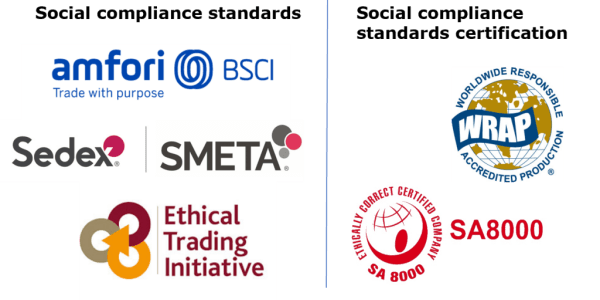
Wir helfen unseren Partnern dabei, die komplexe Landschaft globaler Vorschriften zu steuern. Folgendes müssen Sie über die wichtigsten regionalen Anforderungen wissen:
Nordamerikanische Vorschriften
Vereinigte Staaten
Verbraucherproduktsicherheitsverbesserungsgesetz (CPSIA)
- Anwendbarkeit: Besonders relevant für Jugendbekleidung
- Anforderungen: Tests auf Blei, Phthalate und andere eingeschränkte Substanzen
- Dokumentation: Kinderproduktzertifikat (CPC) für Jugendprodukte
Anforderungen der Bundeshandelskommission (FTC)
- Identifikationsgesetz von Textilfaserprodukten: Genauige Faserinhaltskennzeichnung
- Pflegekennzeichnungsregel: Klare Pflegeanweisungen
- In den USA angeklagt: Strenge Standards für Ansprüche des Herkunftslandes
Kalifornienangebot 65
- Erfordernis: Warnschilder für Produkte mit gelisteten Chemikalien
- Relevanz: Besonders wichtig, wenn Materialien aufgelistete Substanzen enthalten
- Compliance -Optionen: Entweder beweisen, dass Produkte keine gelisteten Chemikalien enthalten oder Warnungen abgeben
Kanada
Canada Consumer Product Safety Act
- Anforderungen: Ähnlich wie bei den US -Standards mit einigen Variationen
- Textil -Kennzeichnungsgesetz: Zweisprachige Kennzeichnung (Englisch/Französisch)
- Entflammbarkeitsanforderungen: Einhaltung der Entflammbarkeitsstandards
Vorschriften der Europäischen Union
Reichweite (Registrierung, Bewertung, Autorisierung und Einschränkung von Chemikalien))
- Umfang: Schränkt zahlreiche gefährliche Substanzen bei Konsumgütern ein
- Anforderungen: Einhaltung von Substanzbeschränkungen, Dokumentation
- Aktualisierungen: Regelmäßige Ergänzungen zur eingeschränkten Substanzliste
Allgemeine Produktsicherheitsrichtlinie
- Erfordernis: Produkte müssen für die beabsichtigte Verwendung sicher sein
- Dokumentation: Technische Datei, die Sicherheitsbewertung demonstrieren
Textilkennzeichnungsregulierung
- Anforderungen: Faserinhalt in allen EU -Sprachen, Pflegeanweisungen
- Bevorstehende Änderungen: Potenzielle neue Anforderungen an Nachhaltigkeitskennzeichnungen
Asien-pazifische Vorschriften
Australien/Neuseeland
- Produktsicherheitsstandards: Einhaltung der AS/NZS -Standards
- Australisches Verbrauchergesetz: Produktsicherheit und Kennzeichnungsanforderungen
- Wettbewerbs- und Verbrauchergesetz: Wahrheit in den Werbeanforderungen
Japan
- Kennzeichnungsgesetz von Haushaltswarenqualität: Spezifische Kennzeichnungsanforderungen
- Japanische Industriestandards (JIS): Qualitäts- und Sicherheitsstandards
China
- GB -Standards: Einhaltung der nationalen Standards für Textilien
- CIQ -Inspektion: Potenzielle Inspektion bei Zoll
- Kennzeichnungsanforderungen: Chinesische Sprachkennzeichnung
Informationen zum Navigieren von Lieferketten- und Logistiküberlegungen in verschiedenen Regionen finden Sie in unserem Leitfaden zu Von der Fabrik zum Lager: MOQS verstehen, Vorlaufzeiten & Logistik in Activewear & Yoga tragen Beschaffung.
Wie bewerten Sie Fabrikstandards und ethische Fertigung?
Die Gewährleistung der ethischen Fertigung wird für Verbraucher und Einzelhändler immer wichtiger. Viele Unternehmen haben Schwierigkeiten, die Fabrikbedingungen und ethische Praktiken zu überprüfen, insbesondere bei der Herstellung in Übersee.
Bei der Bewertung der Fabrikstandards werden die soziale Einhaltung (Arbeitspraktiken, Arbeitsbedingungen, faire Löhne), Umweltverantwortung (Abfallmanagement, Ressourcennutzung), Qualitätsmanagementsysteme (konsistente Produktionsstandards) und Transparenz (Bereitschaft, Informationen und Audits) zu bewerten.
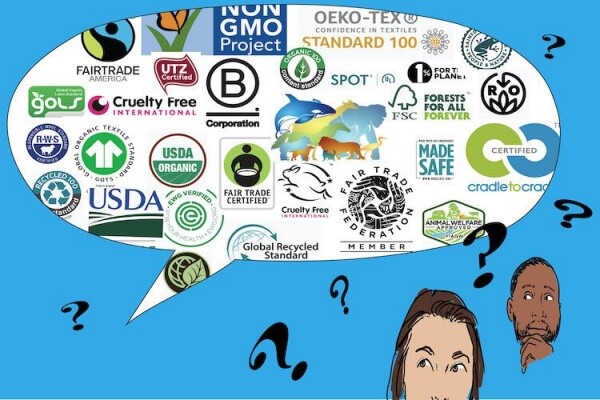
Wir haben uns zu ethischen Fertigungspraktiken verpflichtet und Kundenprüfungen unserer Einrichtungen begrüßen. Hier erfahren Sie, wie Sie die Fabrikstandards effektiv bewerten können:
Bewertung der sozialen Compliance
Schlüsselbereiche zu bewerten
Arbeitspraktiken
- Arbeitszeiten Einhaltung der lokalen Gesetze
- Faire Lohnzahlung und Überstundenentschädigung
- Rechte der Vereinigungsfreiheit
- Kein Kind oder Zwangsarbeit
Arbeitsbedingungen
- Sicherheitsmaßnahmen am Arbeitsplatz
- Notfallverfahren und Ausgaben
- Ordnungsgemäße Belüftungs- und Temperaturkontrolle
- Angemessene Beleuchtung und Ergonomie
Angestellter Wohlbefinden
- Zugang zu Pausen und Ruhezeiten
- Sauberes Trinkwasser und sanitäre Einrichtungen
- Beschwerdemechanismen
- Anti-Versuchsrichtlinien
Überprüfungsmethoden
Audits von Drittanbietern
- BSCI (Business Social Compliance Initiative)
- Wrap (weltweit verantwortungsbewusste akkreditierte Produktion)
- Seetex/smeta (Lieferant Ethischer Datenaustausch)
- SA8000 (Social Accountability International)
Direkte Bewertung
- Anlagenbesuche (angekündigt und unangekündigt)
- Mitarbeiterinterviews vom Management weg
- Überprüfung der Dokumente (Gehaltsabrechnung, Zeitaufzeichnungen, Richtlinien)
- Lokale Konsultation der Stakeholder
Bewertung der Umweltverantwortung
Schlüsselbereiche zu bewerten
Ressourcenmanagement
- Wasserverbrauch und Naturschutzmaßnahmen
- Energieeffizienz und Nutzung erneuerbarer Energien
- Rohstoffbeschaffung und Effizienz
Umweltverschmutzungskontrolle
- Abwasserbehandlungssysteme
- Luftemissionskontrollen
- Praktiken des chemischen Managements
Abfallbewirtschaftung
- Strategien zur Reduzierung von Textilabfällen
- Recyclingprogramme
- Handling mit gefährlicher Abfall
Überprüfungsmethoden
Umweltzertifizierungen
- ISO 14001 (Umweltmanagement)
- Bluesign®-System (textilspezifischer Umgebungsstandard)
- ZDHC (Zero -Entladung gefährlicher Chemikalien)
Direkte Bewertung
- Überprüfung der Umweltpolitik
- Einrichtungsprüfung von Umweltkontrollen
- Beobachtung der Abfallbewirtschaftung
- Versorgungsrechnungen und Verbrauchsaufzeichnungen
Qualitätsmanagementbewertung
Schlüsselbereiche zu bewerten
Qualitätskontrollsysteme
- Eingehende materielle Inspektion
- Qualitätsüberprüfungen in den Prozess
- Endproduktinspektion
- Testen von Protokollen für Leistungsattribute
Dokumentation und Rückverfolgbarkeit
- Dokumentation der Materialbeschaffung
- Produktionsaufzeichnungen
- Qualitätstestergebnisse
- Los -Tracking -Systeme
Kontinuierliche Verbesserung
- Problemlösungsmethoden
- Defektverfolgung und Analyse
- Mitarbeiterausbildungsprogramme
- Gerätewartung
Factory Evaluation Checkliste
Verwenden Sie bei der Bewertung potenzieller Fertigungspartner diese Checkliste:
| Kategorie | Schlüsselfragen |
|---|---|
| Soziale Einhaltung |
• Welche sozialen Compliance -Zertifizierungen halten sie? • Wann war ihr letzter Audit von Drittanbietern? • Sind sie bereit, Prüfungsberichte auszutauschen? • Wie hoch ist ihre Umsatzrate für Mitarbeiter? |
| Umweltpraktiken |
• Welche Umweltmanagementsysteme sind vorhanden? • Wie gehen sie mit Abwasser- und Textilabfällen um? • Haben sie Energieeffizienzprogramme? • Welche chemischen Managementprotokolle folgen sie? |
| Qualitätssysteme |
• Welche Qualitätszertifizierungen pflegen sie? • Welche Testgeräte haben sie im eigenen Haus? • Wie gehen sie mit Qualitätsproblemen und Mängel um? • Können sie hochwertige Leistungsmetriken bereitstellen? |
| Transparenz |
• Sind sie bereit, Einrichtungsbesuche zuzulassen? • Entdecken sie alle Produktionsstandorte (einschließlich Subunternehmer)? • Werden sie den Arbeitnehmern für Interviews Zugang bieten? • Wie kommunizieren sie Produktionsprobleme? |
Informationen zur Entwicklung Ihrer eigenen Aktivkleidung mit ethischen Herstellern finden Sie in unserer Ressource Ihre Marke, Ihr Produkt: Der komplette Leitfaden für die Aktivbekleidung für Private Label (OEM/ODM) & Yoga Wear Manufacturing.
Wie stellen Sie die kontinuierliche Einhaltung und Qualität sicher?
Die erste Zertifizierung ist nur der Anfang. Viele Unternehmen implementieren keine Systeme für die laufende Konformitätsüberwachung, was zu Standards im Laufe der Zeit führt.
Für die Gewährleistung einer kontinuierlichen Einhaltung erfordert die Implementierung regelmäßiger Testprotokolle (Materialtests, Leistungstests, Waschdauerprüfung), regelmäßige Fabrikaudits (sowohl geplante als auch überraschende Besuche), die Aufrechterhaltung klarer Dokumentationssysteme und die Festlegung von Korrekturmaßnahmen zur Behandlung von Problemen, die auftreten.
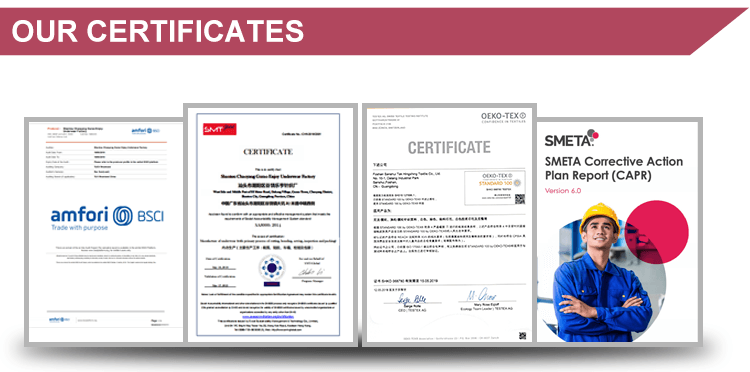
Wir haben umfassende Systeme entwickelt, um die Compliance- und Qualitätsstandards während unserer Herstellungsprozesse aufrechtzuerhalten. Hier ist unser Ansatz zur laufenden Compliance:
Regelmäßige Testprotokolle
Materialtest
Frequenz: Jedes ankommende Los
Tests durchgeführt:
- Faserinhaltsüberprüfung
- Eingeschränkte Substanz -Screening
- Physikalische Eigenschaften (Gewicht, Stretch, Genesung)
- Farbe Fastness
Produktionstests
Frequenz: Während der Produktion in definierten Intervallen
Tests durchgeführt:
- Leistungsattributüberprüfung
- Bauqualitätskontrollen
- Dimensionsstabilität
- Aussehensstandards
Fertige Produkttests
Frequenz: Jede Produktionslose
Tests durchgeführt:
- Vollständige Leistungstests
- Probenahme der Haltbarkeit waschen
- Endgültige Qualitätsinspektion
- Verpackungsintegrität
Prüfungs- und Inspektionsplan
Interne Audits
Frequenz: Monatlich
Fokusbereiche:
- Produktionsprozessbehandlung
- Implementierung der Qualitätskontrolle
- Sicherheits- und Compliance -Standards
- Dokumentation Vollständigkeit
Audits von Drittanbietern
Frequenz: Jährlich oder nach Anforderungen durch Zertifizierungen
Typen:
- Soziale Compliance -Audits
- Umweltprüfungen
- Audits für Qualitätsmanagementsysteme
- Spezifische Erneuerungen der Zertifizierung
Client Audits
Frequenz: Wie von Kunden angefordert
Ansatz:
- Richtlinien für offene Türen für Kundenbesuche
- Transparente Teilen der Dokumentation
- Zugang zu Produktionsbereichen
- Arbeitnehmerinterviews gegebenenfalls
Dokumentationssysteme
Die Aufrechterhaltung einer umfassenden Dokumentation ist für die Nachweis der Einhaltung von entscheidender Bedeutung:
- Materialzertifikate: Dokumentation für alle eingehenden Materialien
- Testberichte: Ergebnisse aller durchgeführten Tests
- Produktionsaufzeichnungen: Detaillierte Fertigungsdokumentation
- Zertifizierungsdokumente: Aktuelle Zertifikate und Prüfungsberichte
- Trainingsaufzeichnungen: Dokumentation der Mitarbeiterausbildung
- Korrekturmaßnahmenberichte: Aufzeichnungen von Problemen und Resolutionen
Ausführliche Informationen zu Qualitätskontrollstandards und Testprotokollen finden Sie in unserer umfassenden Ressource auf Gewährleistung von Produktexzellenz: Qualitätskontrolle & Fertigungsstandards für Activewear & Yoga tragen Beschaffung.
Abschluss
Die Navigation der Einhaltung, Zertifizierungen und Fabrikstandards ist für die Beschaffung von Aktivkleidung mit Vertrauen von wesentlicher Bedeutung. Durch das Verständnis von relevanten Zertifizierungen, regionalen Vorschriften, ethischen Fertigungsstandards und laufenden Compliance-Anforderungen können Unternehmen ihren Ruf der Marken schützen und gleichzeitig Verbraucher sicher, qualitativ hochwertige Produkte liefern.
Unser Engagement für Compliance und ethische Fertigung war für unseren Erfolg bei der Herstellung von über 30 Millionen US -Dollar im Jahresumsatz von mehr als 3.000 Geschäften von zentraler Bedeutung und bei der Aufrechterhaltung der höchsten Standards für die Produktsicherheit und -qualität.
Eine umfassende Übersicht über die gesamte Kategorie Activewear, einschließlich Markttrends und Geschäftsmöglichkeiten, besuchen Sie unsere Ultimativer B2B -Leitfaden zur Beschaffung & Verkaufen activewear & Yoga -Verschleiß.
Häufig gestellte Fragen (FAQ)
Was ist die wichtigste Zertifizierung für Activewear?
Oeko-TEX Standard 100 wird allgemein als die wichtigste Zertifizierung für Activewear angesehen, da es überprüft, dass alle Komponenten frei von schädlichen Substanzen sind-kritisch für Produkte mit längerem Kontakt mit der Haut während des Trainings.
Wie oft sollte Activewear auf Compliance getestet werden?
Für jedes neue Material Lose sollte Materialtests auftreten, während für jeden Produktionslauf fertige Produkttests durchgeführt werden sollten. Umfassende Compliance -Überprüfungen, einschließlich der Erneuerung der Zertifizierung, folgen in der Regel jährliche Zyklen.
Was ist der Unterschied zwischen BSCI und Wrap -Zertifizierungen?
Sowohl zertifizieren die ethische Fertigung als auch die BSCI (Business Social Compliance Initiative) in europäischen Märkten häufiger und folgt einem kontinuierlichen Verbesserungsansatz, während Wrap (weltweit verantwortungsbewusste akkreditierte Produktion) in nordamerikanischen Märkten häufiger vorkommt und ein System zur Zertifizierungsebene verwendet.
Fordern Sie die aktuellen Prüfungsberichte von Drittanbietern an, überprüfen Sie die Zertifizierungsgültigkeit über die Zertifizierungsstellen, führen Sie Ihre eigenen Fabrikbesuche durch (sowohl angekündigt als auch unangekündigt, wenn möglich) und sprechen Sie mit anderen Kunden, die mit der Fabrik arbeiten.
Welche Dokumentation sollte ich von potenziellen Fertigungspartnern anfordern?
Fordern Sie aktuelle Kopien relevanter Zertifizierungen (OEKO-TEX, ISO, Social Compliance), aktuelle Prüfungsberichte von Drittanbietern, Testberichte für ähnliche Produkte und ihre schriftlichen Richtlinien zur Qualitätskontrolle, soziale Verantwortung und Umweltmanagement an.
Wie unterscheiden sich die regionalen Vorschriften für Activewear?
Zu den wichtigsten Unterschieden gehören Kennzeichnungsanforderungen (Sprache, Inhalt), chemische Beschränkungen (EU -Reichweite ist im Allgemeinen strenger als US -Vorschriften), Entflammbarkeitsstandards und spezifische Anforderungen für Produkte, die an Jugendliche vermarktet werden.
Holen Sie sich ein kostenloses Angebot für Ihre Activewear -Projekte
